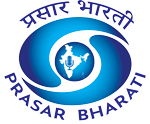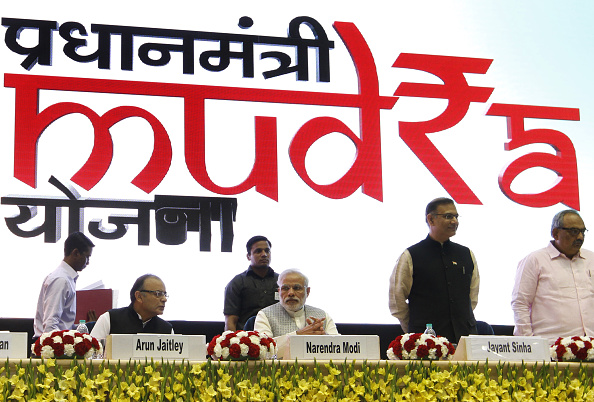The Pradhan Mantri Mudra Yojana (PMMY), launched on April 8, 2015, by the Narendra Modi Government, has emerged as a transformative force in India’s economic landscape, addressing long-standing gaps in financial inclusion and empowering micro, small, and medium enterprises (MSMEs) to drive socioeconomic change.
Over the past decade, this scheme has sanctioned over 52.07 crore loans amounting to Rs. 33.19 lakh crore, with Rs. 32.40 lakh crore disbursed as of February 2025, according to data from the scheme’s official records. This unprecedented credit flow has not only ushered in an entrepreneurial revolution but also reshaped the financial ecosystem, particularly for marginalized groups, women, and small-scale businesses in rural and semi-urban areas, fostering a shift from job-seeking to job-creating mindsets across the country.
Come to think of it, those who, a decade ago, could not approach banks because they lacked bank accounts and had no hope of being covered by the formal purview of our financial system are today in a position to access collateral-free loans.
Before the introduction of PMMY, India’s financial system was marred by inequities that favoured the well-connected and powerful. During the United Progressive Alliance (UPA) era, politically influenced lending practices, often termed “phone banking,” prioritized large corporations, leaving small entrepreneurs, minority communities, and micro-business owners struggling to access credit.
Here’s an interesting statistical anomaly: between FY07 and FY12, banking system loans grew at a compound annual growth rate (CAGR) of 20 per cent, but debt to the top ten corporations grew at a CAGR of 40 per cent. One conglomerate, which the opposition uses to draw political mileage from, saw its debt balloon at a CAGR of 74 per cent in the same period.
Banks frequently extended reckless loans to big businesses, leading to a pile-up of non-performing assets (NPAs), which, in turn, made it harder for genuine borrowers to secure financing. This was the twin-balance-sheet problem Prime Minister Narendra Modi inherited in 2014 from the previous government. Small farmers and micro-businesses were often forced to rely on informal lenders who charged exploitative rates, further deepening their financial woes. The MUDRA Yojana solved this problem, bringing formal credit to every household, town, and village, and every aspiring job and wealth creator.
The scheme is structured across four loan categories to cater to different stages of business growth: Shishu, covering loans up to Rs. 50,000; Kishor, for loans between Rs. 50,000 and Rs. 5 lakh; Tarun, for loans between Rs. 5 lakh and Rs. 10 lakh; and Tarun Plus, introduced later, offering loans up to Rs. 20 lakh for entrepreneurs who have successfully repaid previous Tarun category loans.
The mere fact that the government could raise the upper limit of loans to Rs. 20 lakh is a testament to the program’s success. The government showcased its belief in aspiring entrepreneurs, even those willing to start a business with just Rs. 50,000. These entrepreneurs, some of whom did not have bank accounts before 2014, did not disappoint.
PMMY’s role in financial inclusion is equally significant. The scheme has brought first-time borrowers into the formal credit system, with 20 percent of its loans extended to new entrepreneurs or accounts since its launch. By formalizing informal sector businesses, PMMY has expanded the nation’s tax base and strengthened the financial ecosystem.
The average loan size has also grown substantially, from Rs. 38,000 in FY16 to Rs. 1.02 lakh in FY25, reflecting deepening market opportunities and economies of scale. Specifically, the average ticket size for Shishu loans increased from Rs. 19,411 in FY 2015-16 to Rs. 37,400 in FY 2024-25, while Tarun loans rose from Rs. 7,67,555 to Rs. 8,32,866 over the same period.
One of the most striking aspects of PMMY is its impact on women and marginalized groups. Nearly 68 per cent of PMMY loans have been sanctioned to women entrepreneurs, with the average ticket size for women increasing from Rs. 24,746 in FY 2015-16 to Rs. 64,537 in FY 2024-25. Over the last nine years (FY25 over FY16), per-woman PMMY disbursement amounts have grown at a CAGR of 13 per cent to Rs. 62,679, while per-woman incremental deposits have risen at a CAGR of 14 percent to Rs. 95,269.
Internationally, PMMY has garnered acclaim. The International Monetary Fund (IMF) has repeatedly praised the scheme, noting in 2017 its success in enabling women-led businesses to access finance, in 2019 its role in developing micro-enterprises, and in 2023 its contribution to boosting women-owned MSMEs, which now number over 2.8 million.
In 2024, the IMF highlighted PMMY’s role in increasing self-employment and formalization through credit. The scheme’s expansion into new sectors, such as homestays in the tourism industry, with potential loans of Rs. 1,500 crore under the Shishu category as announced in Budget 2025, further demonstrates its adaptability and forward-looking approach.
Where does the future of the MUDRA program lie? The account aggregator framework has ushered in paperless credit for entrepreneurs. Furthermore, with the Open Network for Digital Commerce (ONDC) gaining steam, many more job creators will seek ease of credit, and this is where the MUDRA program will play an important role. At some point, a sub-program focused on education and skilling could also be considered, where people can avail of collateral-free loans with a repayment cycle beginning after a year’s gap.
The MUDRA program is a testament to a decade of opportunity and dreams turning into reality. The low NPA rate, the increase in the upper limit of the sanctionable amount, the rise in the average value of loans disbursed, and the steady volume growth indicate the credit vacuum the government has successfully addressed. The tyranny of informal lenders is now history. Onward and upward from here.
(Tushar Gupta is a Delhi-based journalist and a political commentator)














